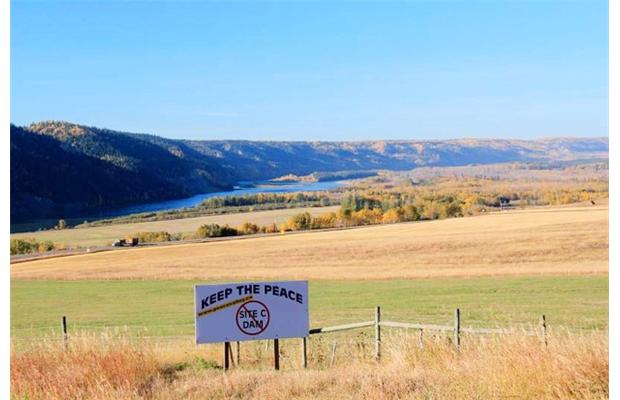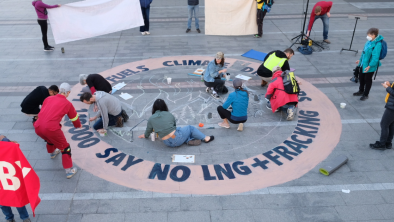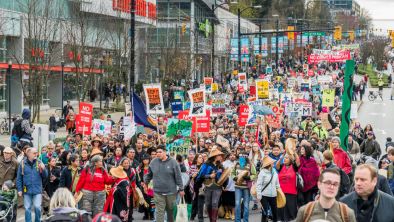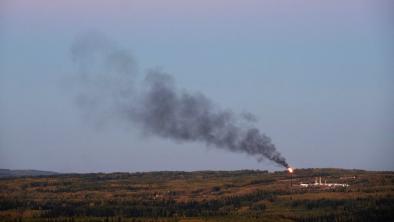Site C: Businesses cheer, environmentalists jeer
Tuesday, December 16, 2014
VANCOUVER SUN

While business cautiously welcomes dam, environmental groups call it unnecessary, costly and destructive
VICTORIA — B.C.’s decision to build the Site C dam was called courageous by business groups on Tuesday but sharply criticized by First Nations, other Peace River valley landowners and the environmental movement.
“It’s courageous and far-sighted of government to make this investment,” said Philip Hochstein, president
of the Independent Contractors and Business Association of B.C. “And really provides the base of economic development that we all need for job creation, and tax revenue to pay for doctors, nurses and teachers.”
John Winter, CEO of the B.C. Chamber of Commerce, said the Liberal government made a “tough decision” at a key time.
“It’s an enabler. It will enable government to invest in energy that will attract investment around the world. It will enable us to continue to be competitive on an energy basis … and it will attract investment to the province on an ongoing basis.”
The B.C. Business Council said it supported the province’s decision, but would have preferred the analysis of future energy supply options be done by the BC Utilities Commission, something Premier Christy Clark’s government has rejected.
Greg D’Avignon, president of the council, said it will be critical for the project to be well-managed so that effects on taxpayers are minimized and to ensure B.C. does not lose its competitive electricity rates.
Paul Kariya, executive director of Clean Energy BC, called the Site C approval a “very difficult decision” for the provincial government and said it took courage.
However, he said he was disappointed independent energy was not chosen as an alternative to Site C, and said he wants to know what role hydro projects, wind farms and plants that burn wood waste would play in B.C.’s electricity plans.
Sierra Club BC chastised government for proceeding with a dam that will flood more than 5,500 hectares of land in the Peace Valley.
Destroying a fertile, biodiverse valley capable of feeding one million people simply makes no sense in the context of climate change,” the Sierra Club’s Ana Simeon said in a statement. “The drought in California demonstrates all too clearly that British Columbia must look within to ensure a secure food supply, yet Site C would destroy the last major undeveloped tract of productive farmland in the province.”
Site C is plagued by “overblown demand projections and a high likelihood of runaway costs,” she said.
The Peace Valley Environmental Association denounced the decision as the “worst” financial decision the province has ever made, and that will also cause environmental destruction and loss of prime farm land.
“It will leave us with a legacy of debt and destruction. Future generations will be shaking their heads in wonderment at the poor judgment of our government when, in time, they address the huge, costly mess that has been left for them to clean up,” said Andrea Morison, the associations’ coordinator.
Wilderness Committee national campaigner Joe Foy said the project will be met by a wall of opposition. “The Site C dam project is so damaging to the environment and wasteful of taxpayers funds that it’s beyond me how any government could come out in favour of building it — but they have,” said Foy.
Green MLA Andrew Weaver called the decision a “lost opportunity” for the province when it could have pursued new alternative energies such as geothermal, wind, solar and biomass.
“I am gravely concerned that government did not compare apples to apples when they examined other alternatives to Site C,” said Weaver. “The rest of the world is taking advantage of the decreasing cost of alternatives such as geothermal, wind and solar technology, while we are effectively subsidizing the construction of another dam.”
Weaver said the reason Site C looks more affordable than small-scale private power projects is because government has shifted capital costs around.
“The government has engaged in some very creative accounting to make Site C look more competitive than it is,” said Weaver.
“They are trying to suggest they have found savings when all they have really done is move the financial costs of this mega project into a different category. The fact is the costs have gone up and so has the burden on taxpayers.”
Photo: The Site C project would flood an 83-kilometre stretch of the Peace River between Fort St. John and Hudson’s Hope, including First Nations lands, farms and an estimated 30 homes. Photograph by: Don Hoffmann


